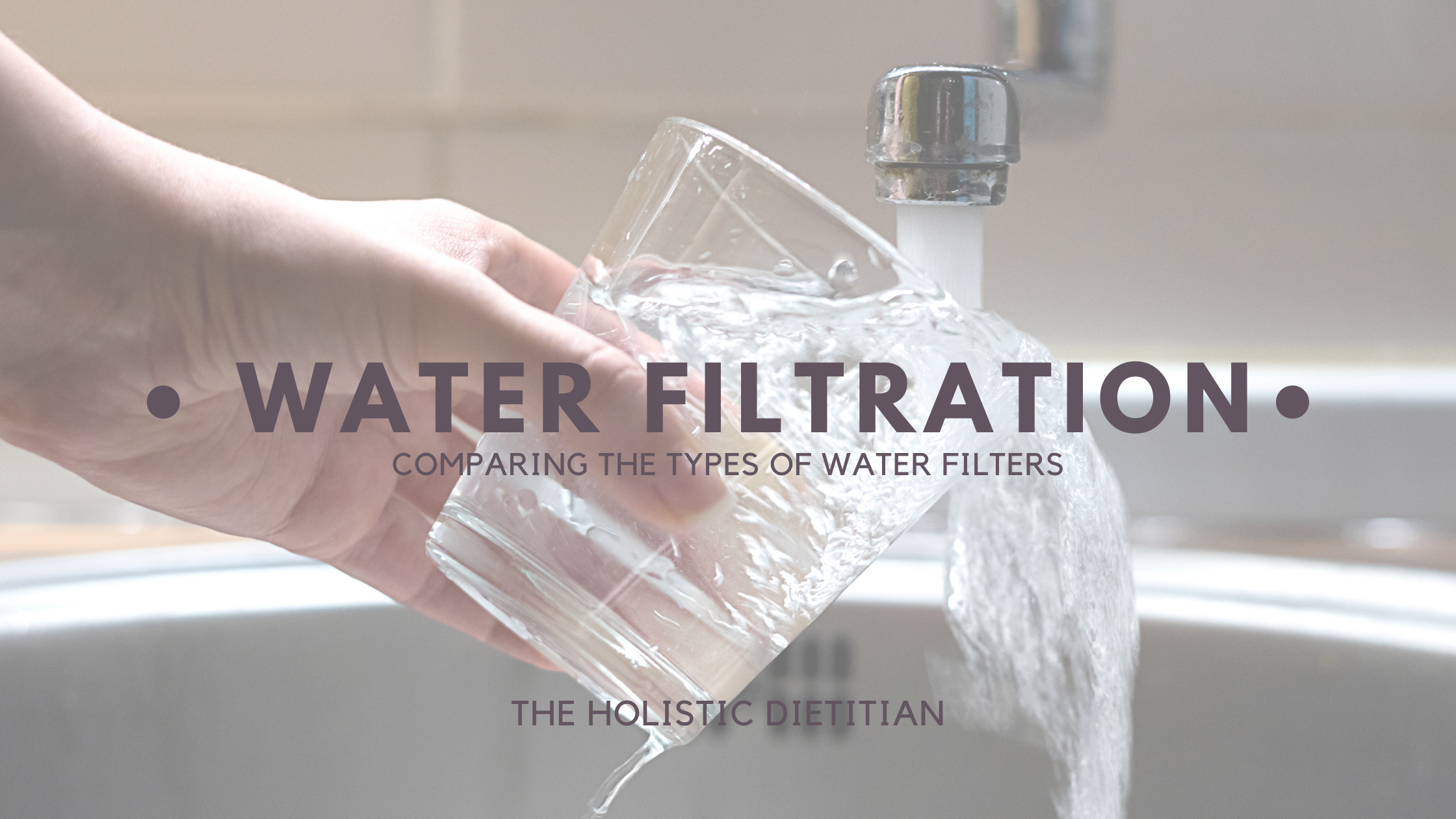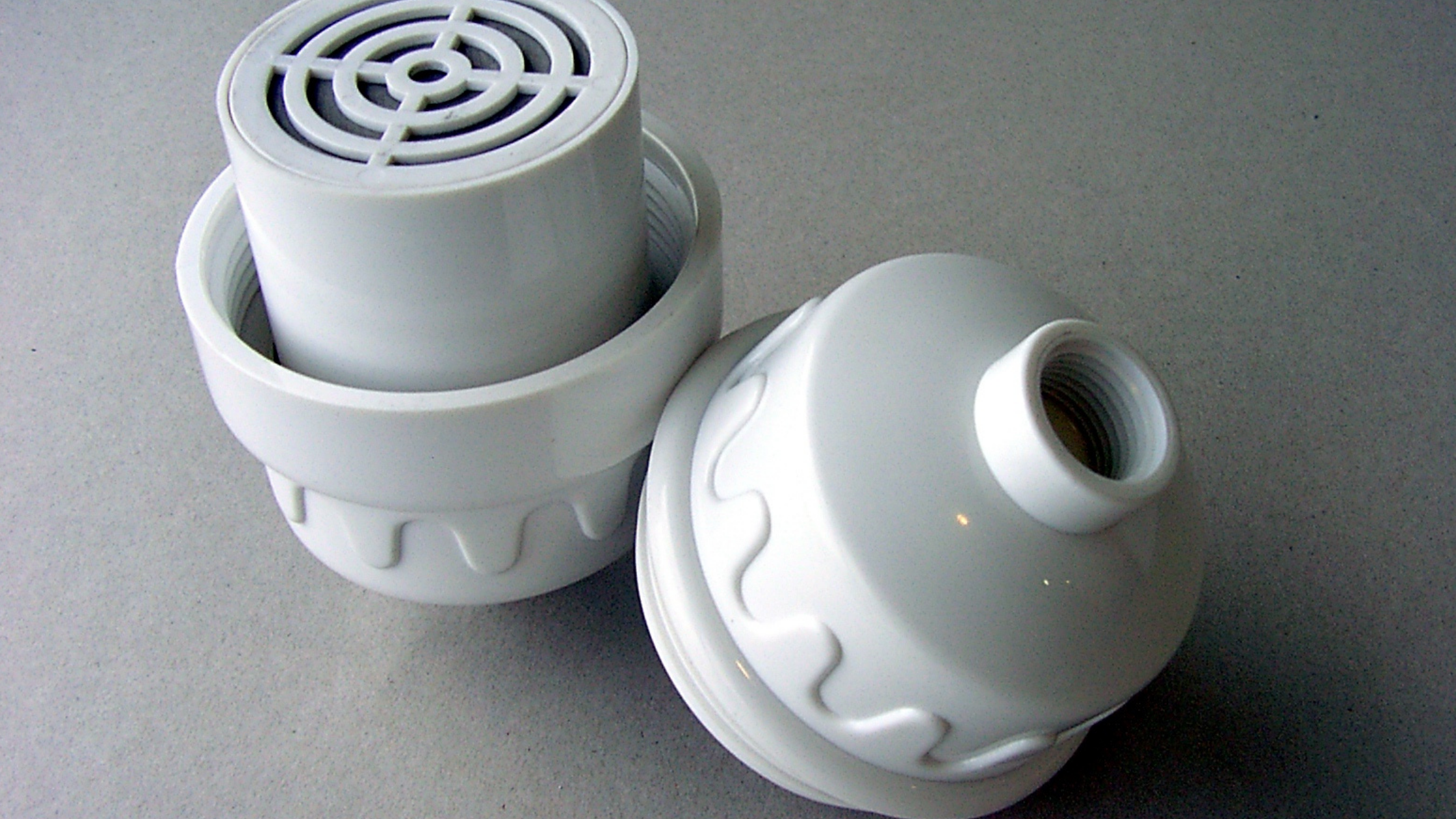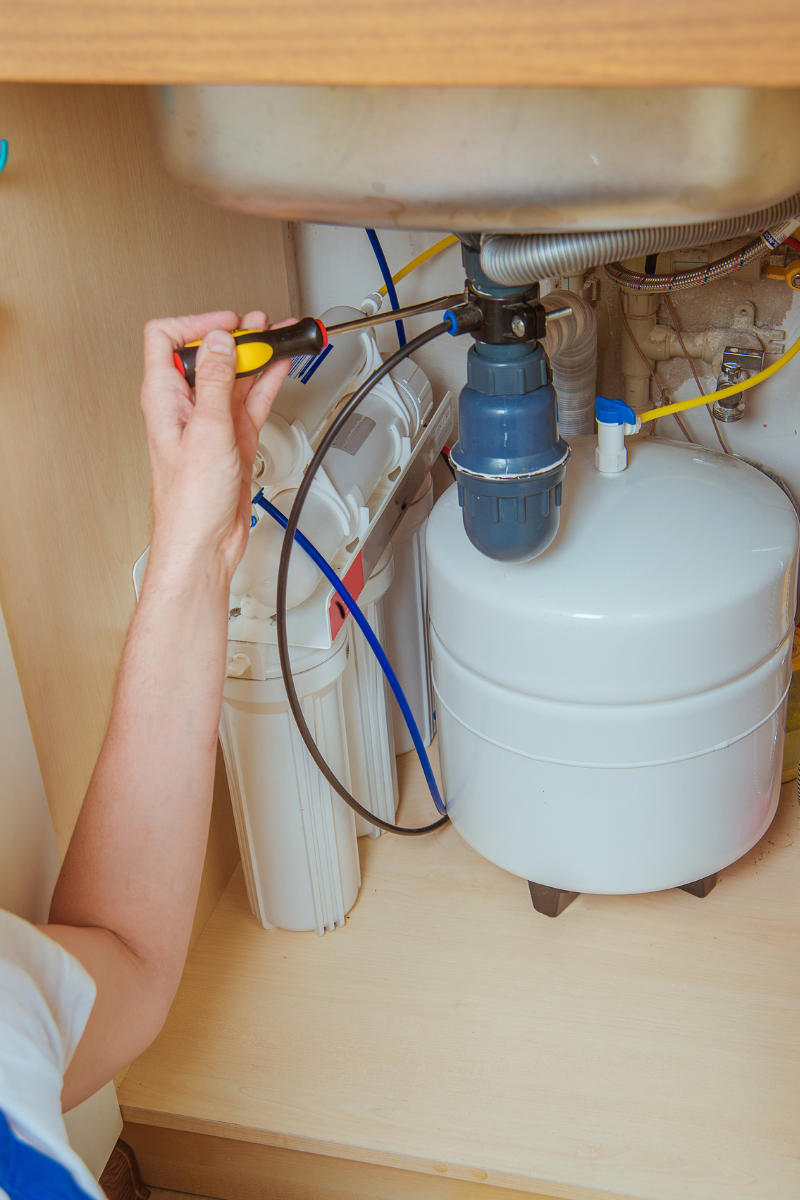
**Please note that this article contains affiliate links. These links allow merchants to know I sent you there way, which earns me a small commission for doing so. There are no negatives to using an affiliate link (you pay the same competitive price you would have otherwise), and these small commissions help add up to support my ability to provide helpful articles such as this one.**
Considering the contaminants found in tap and bottled waters, water filtration is an important step in maintaining optimal health. With so many options, though, it can be a confusing process to pick the right filtration option for you.
The first step in selecting water filtration is to know what you’re trying to filter out of your water. While you can use at home testing kits or have a service in to test and evaluate your water, the Environmental Working Group (EWG) Tap Water Database is a free and fairly comprehensive look at contaminants in your local water sources. Simply enter your zip code, click on your tap water provider. It even includes community water wells and other non-municipality water sources.
assessing your situation
There is no one-filter-fits-all model. Before choosing a filter, you should consider your water type (soft vs hard, well vs municipal), how many people that will be drinking the water (total capacity of the system), where you live (apartment/house, rent vs own), and budget.
Even just within our own household, we have employed various filtration methods, based solely on our housing situation. At our past home, which we have since sold, we had a whole house water softener and under-the-counter Reverse Osmosis (RO) filter installed, which was imperative to our goal to filter all water, not just our drinking water. However, we are renting currently, so our filtration methods cannot be a permanent installation and therefore, a whole house filtration or even under-sink system will not work for our current, temporary circumstances.
No matter what you choose, I suggest finding one that has third-party test results and has been NSF certified. I also highly recommend doing your own testing of the water afterwards to ensure it’s working effectively. Many filters contains directions on completing a dye test but you can go beyond that and order your own test kits from labs such as Water Check and Water Safe Test Kits.
consider your bath water too
One constant for all homes, though, is this: not only is it important to filter the water we ingest when drinking and cooking, but we must also be mindful of the contaminants that we absorb when bathing or showering and washing hands and dishes. We may also be absorbing water-carried toxins through the clothing and linens that we wash with it.

Chlorine is one of the most prevalent and concerning water contaminants due to its harmful byproducts, including chloroform. It is thought to be a possible and heavy cause of both tumor growth in cancer patients and atherosclerosis, which leads to heart attacks and strokes. In addition to being absorbed when consumed, chlorine and chloroform can be absorbed through inhalation and by the skin. Chlorine is rapidly absorbed by the skin and is a gas at room temperatures and above, turning long, hot showers or baths into potential health risks. In fact, the chlorine absorbed by an adult bathing or showering for 15 minutes can be more than double that absorbed from drinking 64 ounces of water, according to Dr. Martin Fox in his book Healthy Water.
No matter how you look at it, clean water is an important step to maintaining a healthy body and reducing exposure to health-risking toxins.
The best way to ensure you are drinking and using clean water is through the use of home filtration. There are many filtration methods available, discussed here, each with its own set of strengths and shortfalls.
Types of Water Filters
Different water filtration systems carry different pros and cons. Here are common types of water filtration system at home:

- Sediment Filtration – Most common and basic filtration system to remove large sediments including rust, sand, heavy metals, and other large particles. However, it cannot remove chemicals and contaminants smaller than the labeled micron reading.
- Activated Carbon Filtration – Activated charcoal, which is positively charged, attracts and traps negatively charged chemicals like chlorine and volatile organic compounds (VOCs). Carbon filtration systems are generally affordable, but generally they work best used as a second step after sediment filtration to offer manageable flow rate and longer filter life. (Examples: Brita and standard fridge filters)
- Reverse Osmosis Filtration – Capable of removing up to 99% of contaminants in water including microorganisms like bacteria and cysts; metals like iron, lead, and mercury; minerals like calcium; and much more; however, it does not remove chlorine, some pesticides, or VOCs. Since RO is very effective at removing minerals, it is necessary to add in essential minerals (such as ConcenTrace Mineral Drops) to replace lost minerals and so that water may be effectively absorbed and used in the body. Many times RO systems pair with other filtration to treat chlorinated tap water. These systems usually come at a higher cost than some other filtration methods, and they can take up significant room since they require a water storage tank. (Examples: Aquasauna RO system)
- Distillation – One of the oldest water purification processes, distillation remains an effective, but time consuming, way to filter contaminants from water. In these systems, steam from boiling water is captured and condensed back into water form, which leaves behind contaminants in water, including essential minerals. The whole water distillation process takes quite some time to produce only a small output of distilled water, which makes this application limited and rarely used for home filtration. If using distillation, you will need to add in essential minerals, like ConcenTrace Mineral Drops, for taste and health.
- Ultraviolet (UV) Disinfection – In water treatment, ultraviolet technology is often used to kill 99.99% of microbiological contaminants including most commonly found waterborne viruses and bacteria. However, a UV lamp is always additional protection and not a water filter, so you still need a water filtration system to filter out contaminants and chemicals in the water. It’s best to place a UV disinfection system in the last part of a home water purification system for the best efficiency.
- Activated Alumina Filtration – Water filter made by highly absorptive porous aluminum oxide (bauxite) that is specifically designed to remove fluoride, arsenic, selenium, and thallium in water. For safe drinking water, this method must be used in conjunction with other water filters.
With this knowledge, it is easy to see that for many, it is ideal to use systems that utilize multiple filtration methods for better filtration.
These filtration and treatment methods can be used in a variety of ways. On the basic side, they can be set up within a water pitcher that filters and stores water on the counter or in the fridge. They can be installed directly on the faucet or shower head to filter water as it flows through. There are single- and multi-stage countertop and under sink filtration systems, which offer higher capacity filtration. There are also gravity drip water filters, which offer multi-layer filtration in a system that is friendly to outdoor and dorm use since it requires no kitchen access. There are many options, but as discussed earlier, this allows you to choose according to your situation and preferences.
Our Family’s Water Filtration
As I mentioned earlier, we are currently residing in a rental home. For this reason, we strayed away from the under sink and whole home filtration systems, which require a permanent installation. After much research, we elected to go with a gravity drip system from ProPur. This filter sits on our countertop, holding filtered water in the tank. We use this water for drinking and cooking.
In addition, we use Aquasana shower filters. These filters are installed before (or as replacement of) the shower head, an installation that can be easily reverted to the original condition. This filter simply filters water as it passes through. ProPur and Berkey also offers shower head filters.
Furthermore, we use a little trick to help neutralize chlorine and its byproducts in our bathwater. My children take regular baths (rather than showers) and their developing bodies are potentially even more susceptible to water contaminants during this crucial time of development. In order to help protect them during bathtime, I add ascorbic acid, or Vitamin C, to their bathwater. According to research, ascorbic acid is effective at neutralizing chlorine in water. And just for added support, we add magnesium/Epsom salts to the water, for the added benefits that magnesium brings to his body. I talk about some of the benefits of magnesium here.
Why ProPur versus Berkey Gravity Drip?
I’ve received this question frequently, so I thought I would address why I chose ProPur over the Berkey. Berkey offers a popular and highly loved gravity drip system, much like the one I use from ProPur. It is a fabulous product, to my knowledge, but here are the reasons our family chose ProPur:
- ProPur offers an economic solution that fits our family’s budget.
- ProPur’s filters are all-in-one, in the sense the filters also take out fluoride, rather than needing a separate filter.
- ProPur doesn’t require priming filters before use, which is a convenient perk.
- ProPur provides third party testing, including its effectiveness at removing microplastics, which I discussed in part two of this series. I believe microplastics to be a big health threat, so this data was helpful in making this decision.
Conclusion
Given that there will always be some contaminants in the water entering your home, using a water filtration system may be an important step to protect you and your family from harmful contaminants on a daily basis. Water is vital to your health, so this is a decision that should be chosen carefully and wisely. And remember, it isn’t about what water filtration and purification technology is best; it’s about what method is best for you and your family!